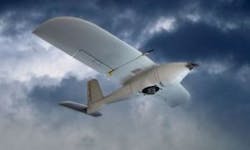DARPA seeks help to develop miniature UAV for persistent surveillance
Researchers at theUS Defense Advanced Research Projects Agency (DARPA; Arlington, VA, USA) are asking industry to develop a small, bird-like unmanned aerial vehicle (UAV) small enough to fit in a soldier's rucksack and able to fly to and perch on useful locations for several hours near targets of interest to provide continuous, real-time persistent surveillance without help from human operators.
The broad-agency announcement (BAA) provides an opportunity for manufacturers and integrators of machine vision components and systems to collaborate with UAV developers.
The DARPA Tactical Technology Office released a broad-agency announcement Wednesday (DARPA-BAA-11-35) for the UAVForge Manufacturing Services program to develop a small, affordable, and easy-to-operate UAV for persistent surveillance in a perch-and-stare mode. DARPA plans to spend about $2 million on the project.
Specifically, DARPA wants to find a contractor to lead companies and teams of companies by providing manufacturing expertise and assessments, as well as building as many as 15 of the perch-and-stare persistent-surveillance miniature UAV. The program will have a fly-off competition to help determine the winning design.
The winning contractor will lead development efforts, but will not be eligible to participate in the design and development competition, DARPA officials say. Administering theUAVForge program for DARPA will be officials of the U.S. Space and Naval Warfare Systems Center Atlantic in Charleston, S.C.
Companies interested should submit proposals by post or by hand delivery to DARPA no later than 12 July 2011 to DARPA/TTO, Attn: BAA 11-35, 3701 North Fairfax Dr., Arlington, VA 22203-1714. Submit questions or concerns by e-mail to [email protected], or by fax to 703-248-1844.
More information, including the BAA, is online atFedBizOpps.gov.
For more information about persistent surveillance and opportunities for vision in UAVs, see our market report:Vision for Service Robots.
SOURCE: John Keller,Military and Aerospace Electronics
Posted byVision Systems Design
